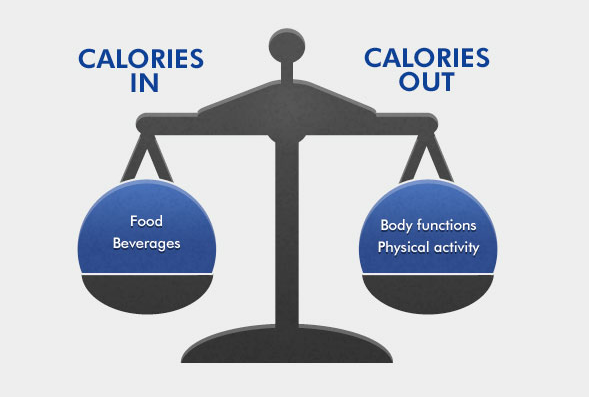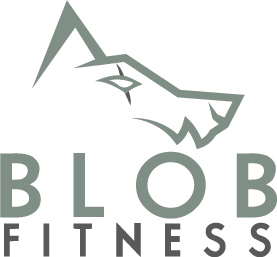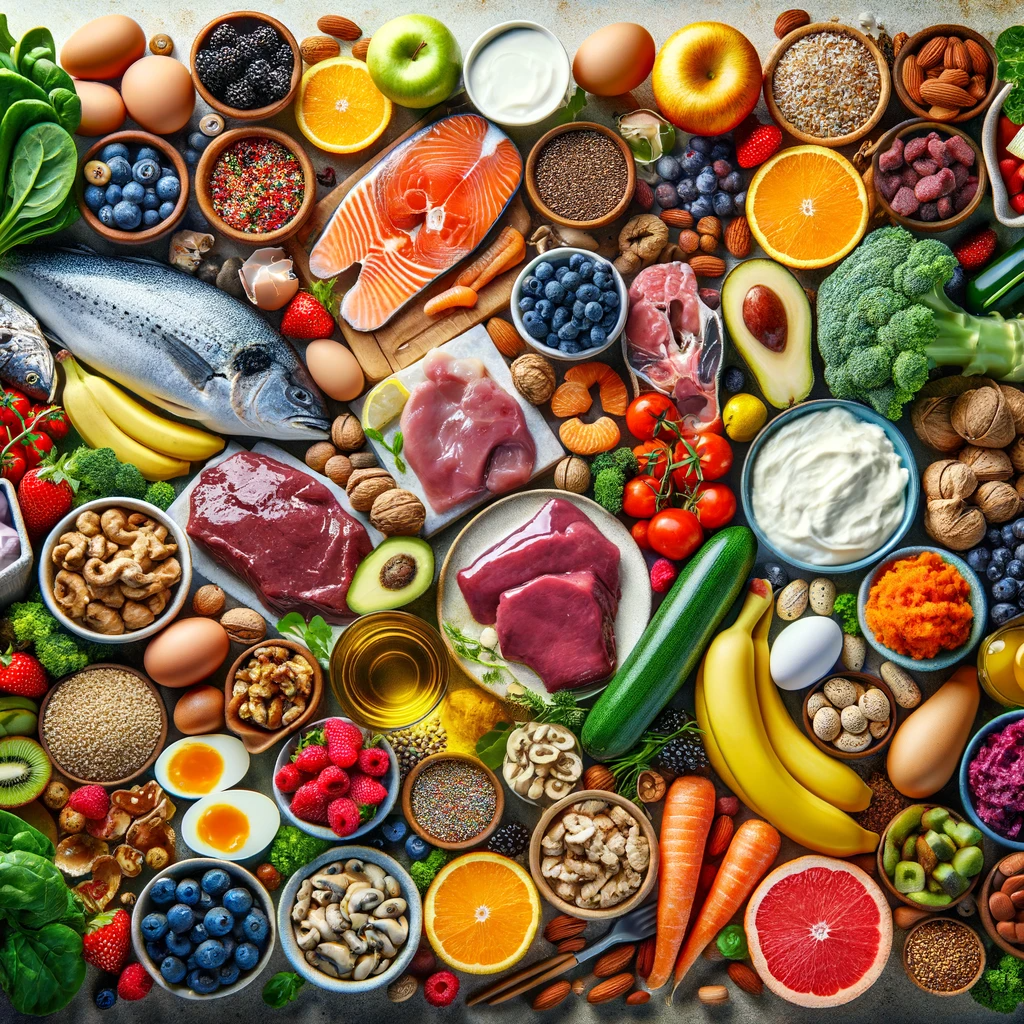
Losing weight seems like a complex process. You often hear about all of these fad diets that pop up every few months on how you can lose X amount of pounds in as little as 3 days. In some cases, it may be true. In other cases not really. Losing weight is a much more simplistic process than what it’s made out to be. We are going to go over the different types of fats, the key to losing weight, and a step-by-step process on how to lose weight with ease.
Different Types of Weight
When we’re in the process of losing weight, we are more concerned with how much weight we lose on the scale. It’s important to note though that we have different types of weight. Your body is made up of lean body mass and body fat.
Lean Body Mass
Lean body mass is your weight minus your body fat. This includes muscular tissue, bones, water weight, organs, and skin. When we refer to “lean body mass”, this is what we mean. Usually, if you’re dropping weight that is lean body mass, you’re either losing water weight or muscle tissue. If you’re losing LBM due to organs, bone density or skin… well that might be a problem.
Body Fat
Body fat is broken up into essential body fat and storage body fat. Essential body fat is the amount of fat we need to live a healthy and functional life, whereas storage body fat is the accumulation of fat/adipose tissue that protects the internal organs. Key word is that it accumulates and can becomes excessive. When you’re losing weight, your goal is to lose storage body fat.
What Losing Weight Easily Comes Down to
We learned that when we are losing weight, our main goal is to lose stored body fat while maintaining as much lean body mass as possible. To lose weight, it comes down to one simple rule, you have to be in a calorie deficit, meaning that you have to burn more calories than you intake. That’s the simplicity of it. Most fad diets work mainly because you’re in a caloric deficit during the process. Let’s look at what a caloric deficiency means for you.
Caloric Deficit
When you’re in a caloric deficit you’re intaking fewer calories than your body is burning. In return, your body starts burning down fat and uses that as energy.
For example, if your calorie maintenance was 2000 calories a day, you can eat 1800 calories a day and be in a calorie deficit and you would start losing weight. It would be as simple as giving up a can of soda or a couple of snacks a day to go into a 200 calorie deficiency.
Granted, you may lose about 0.25 - 0.5 a week but you would be losing weight nonetheless. Now, let’s say you worked out 3-5 days a week and your calorie maintenance was 2000 calories. If you increase your workload (workout 5-6 days a week or more) you can then eat 2000 calories and still be in a calorie deficit and losing weight.
By increasing your workload, you’re utilizing more energy and burning more calories than you’re taking in, which will lead to weight loss.

Step by Step on How to Lose Weight Easily
From above we know that going into a calorie deficit is the key to losing weight. So the first thing you want to do is figure out what your calorie maintenance is. You can click here to utilize the calorie calculator to determine your maintenance calories. Remember, maintenance means if you hit that goal, you are not gaining or losing weight, it’s just the baseline amount your body burns throughout the day.
Step One: New Caloric Goal
So let’s say for example your maintenance calorie intake was 2000 calories a day. The first thing you would want to do is take this number and subtract around 200-300 calories. So your new calorie intake will be 1700-1800 calories a day.
Step Two: Macronutrients
Now that you have your new calorie goal, you’re going to need to get your new set of macros. To understand why macros are important, you can click here. To give a quick summary though, protein is the most important factor when it comes to calculating your macros. The reason being is because you want to maintain as much lean body mass as possible and only lose fat. Granted, this is practically impossible to do on a cut (same as trying to go on a bulk without gaining fat), but you can at least minimize the amount of muscle loss by intaking a proper amount of protein.
Ideally you want to have around 1 gram of protein per pound of body mass. So if you weighed 160 lbs you would want about 160 grams of protein per day. When it comes to carbohydrates and fat, you can weigh that out to decide what works best for you. If you prefer to follow a more keto diet, minimize the carbs and increase your fat intake.
If you’re wondering how you would go about adjusting your macros let’s break it down a bit more. For every 1 gram of protein = 4 calories, 1 gram of carbohydrates = 4 calories and 1 grams of fat = 9 calories. We know that our calorie intake is 1700-1800 but we’ll stick with 1800 for now. We also know that we need to consume 160 grams of protein in order to maintain as much lean body mass as possible.
We’ll multiple the 160 grams of protein by 4 and that equals 640 (160 * 4 = 640). So 640 calories needs to be dedicated to just protein. Let’s subtract that from our 1800 and we’re left with 1160 calories (1800 - 640 = 1160). With that 1160 calories you can do whatever you want!
So if you wanted to do a keto diet and needed a minimum of 40 carbs a day then you would do 40 * 4 = 160. Then you would want to do 1160 (remaining calories) - 160 (calories from carbs) = 1000. Now you have 1000 calories left for fat so then you just do 1000(calories remaining)/9(calories per gram of fat) and you’re left with 111 grams of fat.
Your macronutrients would then be 160 grams of protein, 40 grams of carbs, 111 grams of fat. It may look like a lot at first, but it’s not too bad and you can make your own calculations in a minutes! For the rest of the examples, we’re going to stick with an ordinary carb/fat intake so we’ll say our protein is 160 grams of protein, 145 grams of carbs and 64 grams of fat.
Step Three: Exercise
Now we have everything figured out it’s important that you still exercise the same amount you usually do. If you’re doing resistance training, your main goal when cutting should be to maintain as much strength as possible during the cut. You’ll most likely lose strength no matter what, but you want to try and maintain as much as possible to not see any drastic decreases in strength.
Cheat Meals and Exercise
I want to also note that if you know you’re going to go out to eat and probably go over your macro and calorie range, you should double down on your workouts. If you usually do resistance training, add cardio to your workout that day and vice versa. If you usually do both resistance training and cardio in your workouts just do a little bit more than usual. This way you’re most likely going to expend more calories than you’re consuming and hopefully stay in a calorie deficit (or at-least close the margin of excess calories eaten).
Step Four: Tracking Weight
One of the most important steps is to track and log your daily intake. When you don’t track the foods you’ve eaten it’s very easy to forget what you’ve taken in during the day and underestimate the amount of food you’ve already eaten. I remember the first time I started tracking my food I was surprised on how fast everything started adding up! When you start tracking your items, you’ll be more self aware of just how much you’ve eaten and where you’re at throughout the day in regards to your macros. I promise, once you start tracking your food intake, you’ll see better results. There are plenty of great tracking apps like Myfitnesspal or My Macros + (you can also do it old school and write it all down).
Step Five: Checking In
The last part of this process is checking in. After every week it’s important to check your body weight and your body fat. From here you can see if you’re on track with your goals. Let’s go over a few scenarios that can occur and what to do (all assuming you’ve been keeping track of calories and macros):
I'm Not Losing Weight and/or Body Fat
If you didn’t lose any weight or body fat don’t panic! A simple solution to this problem is take the calorie intake you originally had and reduce it by 100. You can do that, or add some extra training time into your normal routine.
I Gained Weight and/or Body Fat
If you gained weight during the process, follow the same advice as above but reduce your calories by 150 this time and see where you lay in the following week.
I Gained Weight and Lost Body Fat
If you gained weight and lost body fat, that means you gained some lean body mass. This isn’t a bad thing. You should keep you calories and macros the same. If your body fat starts to increase though, then you’ll reduce more. (Note lean body mass also means something like water weight)
I Lost Weight and Didn't Lose Body Fat
This is usually due to dropping water weight. You can drop water weight REALLY fast. Whenever you hear someone say “I lost 10lbs in a week!” It’s mainly water weight they lost. You’ll still be keeping your calorie intake and macros the same
I Lost Weight and Body Fat
Congrats! This is what you want to achieve! You won’t be adjusting your calorie and macros. You want to be able to consume as many calories as possible and still lose weight and fat. So once you hit a plateau, you’ll cut back on calories again.
Final Thoughts
This may seem like a lot to take in! You may even be thinking to yourself “hm this isn’t as simple as he made it sound like.” Trust me, it is. Tracking your food and checking in once a week takes up a small fraction of time. Once you do it for a week or two, you’ll get used to it and it’ll be part of your daily routine that you won’t think much of it.
Get a Free Guide!
Similar Posts
This article on dieting myths debunked will help you understand the main myths to avoid for clarity on your dieting journey.
This article discusses the importance and how to create a nutrient dense diet, rich in vitamins, minerals, and antioxidants, boosts health and vitality.
Explore the crucial interplay of Vitamin D3, Magnesium, and K2 for optimal health, and learn how these nutrients enhance bone, heart, and immune health.



